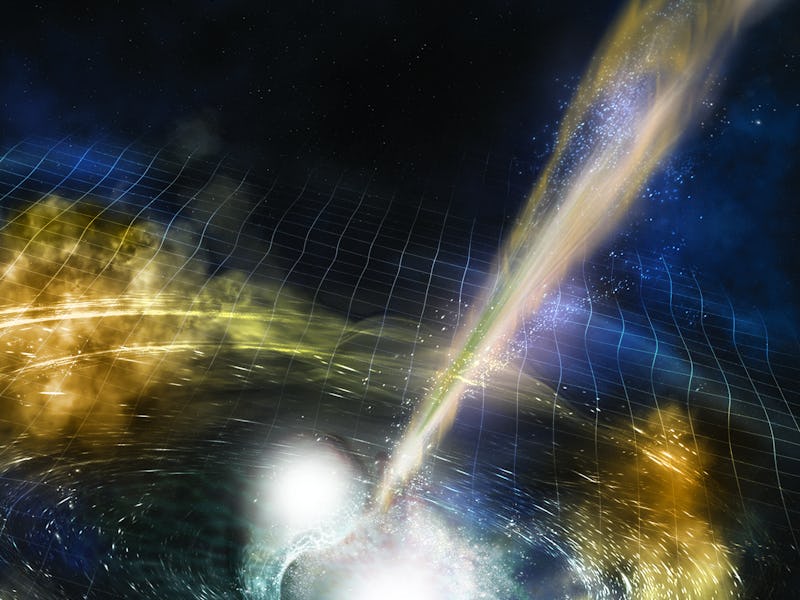LIGO Gravitational Wave Discovery Shows Immense Force of Neutron Star Crash
The stars are so dense they could cram humanity 'into a sugar cube.'

For the first time in human history, scientists have detected gravitational waves from the tremendous collision between two neutron stars. Previous observations of gravitational waves had shown evidence of mergers between black holes — mysterious, unfathomably deep pits of empty space-time millions of light years away.
This time, scientists from the European Southern Observatory explained at a conference on Monday, the gravitational waves had emanated from something huge and concrete that scientists could observe with a telescope.
Speaking at the conference, Radboud University astrophysicist Samaya Nissanke, Ph.D., emphasized the immensity of the bodies involved in the crash. The colliding neutron stars, about 130 million light years away, are about as big as the sun but have a density so high we can barely begin to imagine it.
The density of those stars is “so high that basically you can cram the entirety of humanity into a sugar cube,” she said.
A neutron star is the collapsed core of a high-mass star after it erupts into a supernova. When two objects that colossal slam into each other in an event known as a kilonova, they erupt into a fireball so massive that it shoots out bursts of gamma rays and sends ripples through space time — which are what we now know as gravitational waves, she explained.
These waves, first proposed by Albert Einstein when he published his general theory of relativity, are what the world’s interferometers picked up in mid-August.
An artist's rendering of a neutron star crash, known as a kilonova.
First, the United States National Science Foundation’s Laser Interferometer Gravitational-Wave Observatory (LIGO), in collaboration with the Virgo Interferometer in Pisa, Italy, picked up the waves on August 17; then, ten seconds later, NASA’s Fermi Gamma-ray Space Telescope and the European Space Agency’s INTErnational Gamma Ray Astrophysics Laboratory (INTEGRAL), picked up a short gamma-ray burst from the same area of the sky.
The three interferometers involved in the detection.
Working together, these observatories determined that the signal was coming from a patch of sky over Chile, and telescopes across the globe rapidly swiveled toward it to capture the event. What scientists at Chile’s Paranal Observatory in Chile showed was an extremely bright spot in a galaxy known as NGC 4993. In the weeks following the event, telescopes captured its brilliance slightly fading and becoming slightly redder.
The kilonova, as captured at ESO's Paranal Observatory in Chile.
In the conference, Nissanke explained that the signal from the neutron star collision (assigned the code GW170817,) was much stronger and lasted much longer than the gravitational waves created by the merging of black holes. Previous signals lasted only a few seconds, whereas this one lasted 100 seconds — the longest one ever observed.
The gravitational wave signal from the neutron star crash, shown in yellow, was much stronger than any detection made to date.
Not much is known about about kilonovas, but scientists have theorized that heavy elements like gold and platinum are forged in the fires of those crashes. These elements, together with other radioactive waste, are thought to make up the cloud of debris surrounding the kilonova, which mushroomed out of the collision with such speed and force that it grew from the size of a small city to the size of the solar system in a single day, said Daniel Kasen, a theoretical astrophysicist at the University of California, Berkeley, in an interview with NPR. It’s estimated that the collision released 10 times the Earth’s mass in pure gold.
An artist's rendering of a kilonova, showing the heavy elements released in the aftermath.
In a series of papers on the monumental discovery that will be published in journals such as Astrophysical Journal Letters, Nature, and Science, the 70 research groups (comprising over 3,000 scientists) involved with the discovery will outline the international efforts to determine that all of the detections were coming from that single monumental collision, radiating 100 million times more energy than the sun.
This story is developing.